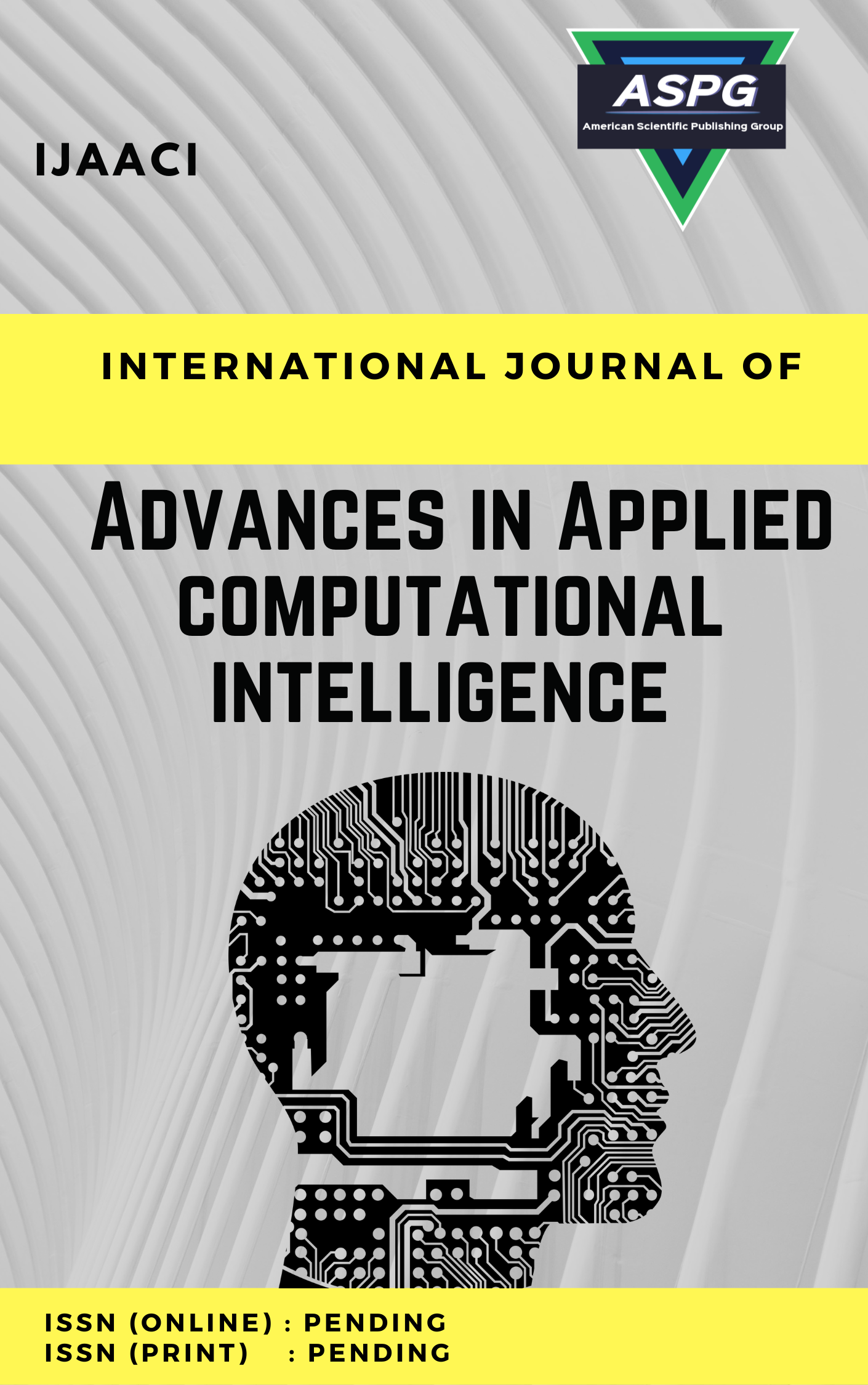

Volume 3 , Issue 2 , PP: 29-37, 2023 | Cite this article as | XML | Html | PDF | Full Length Article
Ayman H. Abdel-aziem 1 * , Tamer H. M. Soliman 2
Doi: https://doi.org/10.54216/IJAACI.030203
The remarkable capacity of artificial intelligence (AI) to analyze enormous quantities of information and create precise forecasts has led to its growing prominence in the field of scientific Astrophysics. Stellar categorization is the process by which stars are sorted according to the characteristics revealed by their spectra. To analyze the star's electromagnetic radiation, a diffraction or prism screen separates it into a spectrum with an assortment of hues and spectral lines used to categorize the star. Star wavelengths are an extremely important piece of data for space-based photography studies. Employing data from over 100,000 cases and a variety of AI models, this study demonstrates how to categorize stellar properties as either a Galaxy or a Star. This paper used the multi-layer perceptron (MLP) neural network (NN) for stellar classification. The MLP is applied in 18 features. This paper showed the correlation between these features. This paper achieved 97% accuracy from the MLP model. This study compared various optimizers to show the best optimizer. The Adagrad optimizer is the best optimizer due to getting the highest validation accuracy.
Neural Networks , Multi-Layer Perceptron (MLP) , Stellar , Classification.
[1] T. M. Brown, D. W. Latham, M. E. Everett, and G. A. Esquerdo, “Kepler input catalog: photometric calibration and stellar classification,” Astron. J., vol. 142, no. 4, p. 112, 2011.
[2] T. Kuntzer, M. Tewes, and F. Courbin, “Stellar classification from single-band imaging using machine learning,” Astron. Astrophys., vol. 591, p. A54, 2016.
[3] C. Damiani et al., “Stellar classification of CoRoT targets,” Astron. Astrophys., vol. 595, p. A95, 2016.
[4] J. W. Richards et al., “Active learning to overcome sample selection bias: application to photometric variable star classification,” Astrophys. J., vol. 744, no. 2, p. 192, 2011.
[5] C. A. L. Bailer-Jones, “Automated stellar classification for large surveys: a review of methods and results,” arXiv Prepr. astro-ph/0102223, 2001.
[6] D. I. Hoffman, T. E. Harrison, and B. J. McNamara, “Automated variable star classification using the Northern Sky Variability Survey,” Astron. J., vol. 138, no. 2, p. 466, 2009.
[7] Z. Hosenie, R. Lyon, B. Stappers, A. Mootoovaloo, and V. McBride, “Imbalance learning for variable star classification,” Mon. Not. R. Astron. Soc., vol. 493, no. 4, pp. 6050–6059, 2020.
[8] I. Becker, K. Pichara, M. Catelan, P. Protopapas, C. Aguirre, and F. Nikzat, “Scalable end-to-end recurrent neural network for variable star classification,” Mon. Not. R. Astron. Soc., vol. 493, no. 2, pp. 2981–2995, 2020.
[9] F. R. Lima-Junior and L. C. R. Carpinetti, “Predicting supply chain performance based on SCOR® metrics and multilayer perceptron neural networks,” Int. J. Prod. Econ., vol. 212, pp. 19–38, 2019.
[10] K.-C. Ke and M.-S. Huang, “Quality prediction for injection molding by using a multilayer perceptron neural network,” Polymers (Basel)., vol. 12, no. 8, p. 1812, 2020.
[11] M. Hosseinzadeh et al., “A multiple multilayer perceptron neural network with an adaptive learning algorithm for thyroid disease diagnosis in the internet of medical things,” J. Supercomput., vol. 77, pp. 3616–3637, 2021.
[12] N. Tamim, M. Elshrkawey, G. Abdel Azim, and H. Nassar, “Retinal blood vessel segmentation using hybrid features and multi-layer perceptron neural networks,” Symmetry (Basel)., vol. 12, no. 6, p. 894, 2020.
[13] M. Desai and M. Shah, “An anatomization on breast cancer detection and diagnosis employing multi-layer perceptron neural network (MLP) and Convolutional neural network (CNN),” Clin. eHealth, vol. 4, pp. 1–11, 2021.
[14] E. B. Moustafa and A. Elsheikh, “Predicting Characteristics of Dissimilar Laser Welded Polymeric Joints Using a Multi-Layer Perceptrons Model Coupled with Archimedes Optimizer,” Polymers (Basel)., vol. 15, no. 1, p. 233, 2023.
[15] W. Qiao, M. Khishe, and S. Ravakhah, “Underwater targets classification using local wavelet acoustic pattern and Multi-Layer Perceptron neural network optimized by modified Whale Optimization Algorithm,” Ocean Eng., vol. 219, p. 108415, 2021.
[16] S. Ghimire et al., “Hybrid convolutional neural network-multilayer perceptron model for solar radiation prediction,” Cognit. Comput., vol. 15, no. 2, pp. 645–671, 2023.
[17] A. A. Ewees, M. Abd Elaziz, Z. Alameer, H. Ye, and Z. Jianhua, “Improving multilayer perceptron neural network using chaotic grasshopper optimization algorithm to forecast iron ore price volatility,” Resour. Policy, vol. 65, p. 101555, 2020.
[18] P. Du et al., “Hydrodynamic detection based on multilayer perceptron and optimization using dynamic mode decomposition,” Ocean Eng., vol. 278, p. 114258, 2023.
[19] Alber S. Aziz,Hoda K. Mohamed,Ahmed Abdelhafeez, Unveiling the Power of Convolutional Networks: Applied Computational Intelligence for Arrhythmia Detection from ECG Signals,International Journal of Advances in Applied Computational Intelligence, Vol. 1 , No. 2 , (2022) : 63-72 (Doi : https://doi.org/10.54216/IJAACI.010205)
[20] R. Ramezanian, A. Peymanfar, and S. B. Ebrahimi, “An integrated framework of genetic network programming and multi-layer perceptron neural network for prediction of daily stock return: An application in Tehran stock exchange market,” Appl. Soft Comput., vol. 82, p. 105551, 2019.
[21] N. I. M. Yusoff, D. I. Alhamali, A. N. H. Ibrahim, S. A. P. Rosyidi, and N. A. Hassan, “Engineering characteristics of nanosilica/polymer-modified bitumen and predicting their rheological properties using multilayer perceptron neural network model,” Constr. Build. Mater., vol. 204, pp. 781–799, 2019.
[22] J. Zhang, C. Li, Y. Yin, J. Zhang, and M. Grzegorzek, “Applications of artificial neural networks in microorganism image analysis: a comprehensive review from conventional multilayer perceptron to popular convolutional neural network and potential visual transformer,” Artif. Intell. Rev., vol. 56, no. 2, pp. 1013–1070, 2023.